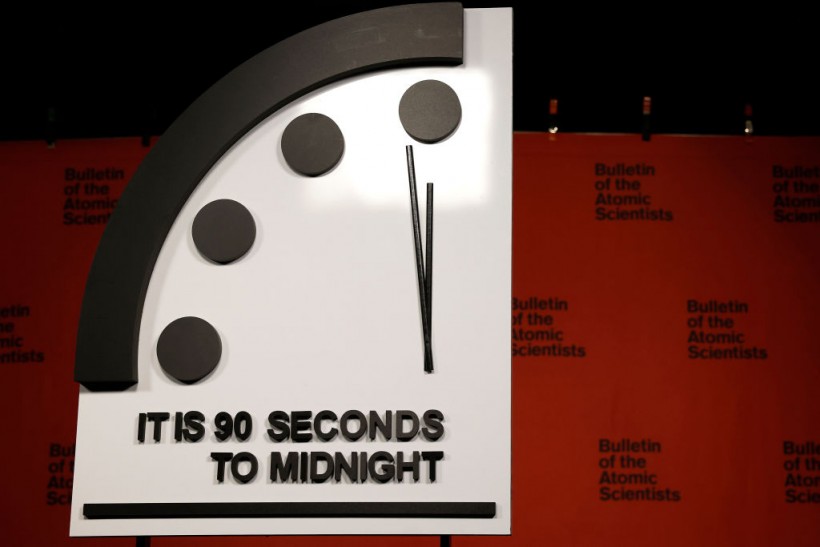Scientists will soon announce how close a hypothetical timepiece known as the Doomsday Clock is to midnight — the hour of humankind’s self-destruction in an apocalypse.
The Doomsday Clock currently stands at its closest-ever point to midnight, with just 90 seconds left before the world as we know it goes up in flames.
A perfect storm of existential threats contributed to the decision to move the clock forward from 100 seconds to 90 seconds to midnight last year. But will the clock lurch forward again in 2024?
This year’s announcement, which will feature science educator Bill Nye among other experts, will be held on Tuesday (Jan. 23) and live streamed on YouTube here from 10:00 a.m. EST.

Scientists and policy experts weigh many factors, such as the likelihood of nuclear bomb attacks, when deciding if the Doomsday Clock should move closer to midnight. (Image credit: Anton Petrus via Getty Images)
As in 2023, climate change, the ongoing war in Ukraine and disruptive technologies played a major role in the new timing of the Doomsday Clock, BAS representatives said.

“Conflict hotspots around the world carry the threat of nuclear escalation, climate change is already causing death and destruction, and disruptive technologies like AI and biological research advance faster than their safeguards,” BAS President and CEO Rachel Bronson said in a statement shared with Live Science.
“On all of these issues there is some progress, ranging from early-stage nuclear diplomacy between the US and China to record breaking investments in renewables [and] emerging national and international policy frameworks around technologies like AI and biological research,” Bronson said. “But none of these efforts are moving forward quickly enough.”
News
Why Did the Titanic Sink?
High speeds, a fatal wrong turn, weather conditions, a dismissed iceberg warning and lack of binoculars and lifeboats all contributed to one of the worst maritime tragedies….
What is time? Why is it so different from space? And where did it come from?
Quantum entanglement — when the states of two particle are intertwined by the laws of quantum mechanics — has long vexed physicists. But the phenomenon may also…
Space probably has way more ‘rogue planets’ than we thought
Astronomers have just doubled the catalogue of potential rogue exoplanets. Astronomers may have found at least 70—and possibly as many as 170—new free-floating exoplanets, which are planets…
BOYZONE fans were left stunned after one of the stars said they “won’t be performing with them again”: Another reunion seems unlikely to happen
BOYZONE fans were left stunned after one of the stars said they “won’t be performing with them again”. The Irish band, comprising of Keith Duffy, late Stephen Gately, Mikey…
Inside Boyzone’s heartbreak: From Keith Duffy’s ‘divorce’ and Stephen Gately’s sudden death to Ronan Keating’s double family tragedy
The 1990s boyband have been through an awful lot – and all in the spotlight Earlier this week, it was reported that Boyzone star Keith Duffy and…
Top 10 90s Bands That Don’t Exist Anymore: Their music will live forever
“Musical Nostalgia: Remembering 90s Bands That Defined an Era” The 1990s was a transformative decade for music, witnessing the rise and fall of numerous iconic bands that…
End of content
No more pages to load











